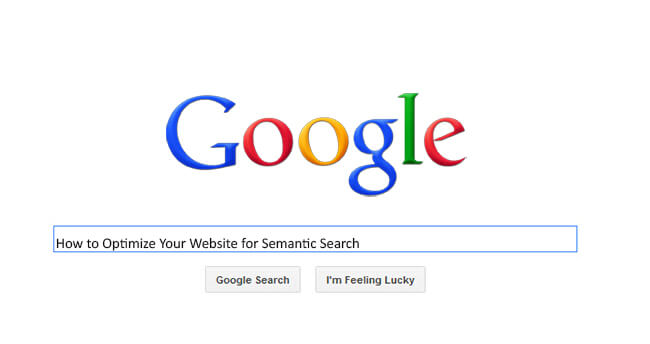How to Optimize Your Website for Semantic Search
The future of SEO is semantic technology and in case you haven’t noticed, it’s already here. The introduction of Google’s Hummingbird algorithm in the summer of 2013 served notice on the digital marketing community that the times are indeed a-changin’. SEO as we know it is on the way out and semantic search is in.
All of the trusted techniques that used to drive traffic to websites are rapidly fading into memory. If you want to compete in the coming years, you’re going to need to learn the ins and outs of semantic search or get left behind.
Just What is Semantic Search?
- Semantic search is a process that improves the accuracy of search results through a better understanding of the search user’s intent, and by interpreting the contextual meaning of the search terms that are used in submitting a search query.
- The semantic search process typically considers a number of factors to produce relevant search results including context of search, intent, location, synonyms, variation of words, and natural language.
- Both the Google and Bing search engines are currently employing a number of semantic search elements in delivering search results to their users.
For example, a search query in the old days for “Miami Dolphins team” would probably have returned such diverse results as the City of Miami, aquatic life that inhabits the area near Miami, and the NFL football team. Today’s sematic technology would likely return results for the professional football team based on its interpretation of the user’s intent.
Optimize Your Website with Semantic Markup
As a starting point, visit schema.org and conduct a search for your industry to determine exactly which of your web properties are supported for markup. Analyze your website and list all of the available content you have that can be marked up. Structured markup enables the search engines to better understand the context of your content by sorting through the individual entity attributes. In turn, this process helps the search engine deliver more targeted and relevant results for the user.
The most commonly used markup codes are microdata, RDFa, and JSON-LD, with microdata being the recommended choice of Google. None of the markup codes require prior knowledge or experience to implement, although a basic understanding of HTML is necessary. Once your pages have been marked up, Google provides a Structured Data Testing Tool in its Google Webmaster Tools suite that can be used to check your markup for correct implementation.

Organize Your Keywords into Separate Groupings
Your focus should be on context rather than on the keywords themselves. Optimizing for user intent requires that you separate your keywords into three separate tiers based on keyword context.
Your first tier should include all of your core keywords, or those keywords that have little deviation from your target set of terms. An easy way to find these is with Google’s “related searches.” For example, if you are targeting “Schwinn bikes,” you would include such related terms in your first tier grouping such as “Schwinn bikes for kids,” “Schwinn bikes on sale,” and “cheap Schwinn bikes.”
In the second tier, you would place your thematic keywords that are not directly related to your core set but are still associated with your keyword theme. If your core keyword is “Schwinn bikes,” then some thematic keywords that you might consider would be “mountain bikes,” or “women’s mountain bikes.”
The third and final tier is reserved for “stem” keywords that primarily serve to answer a user’s questions, such as “Schwinn bikes review.”










